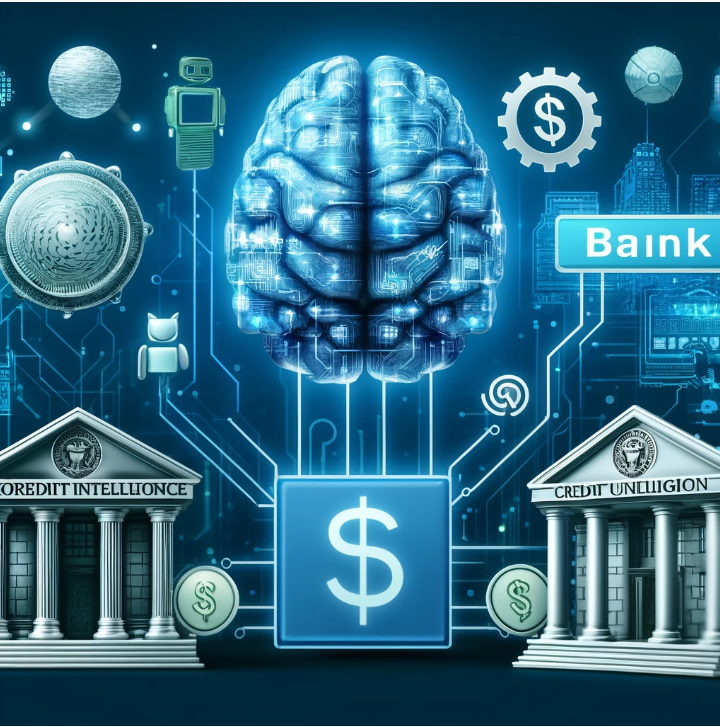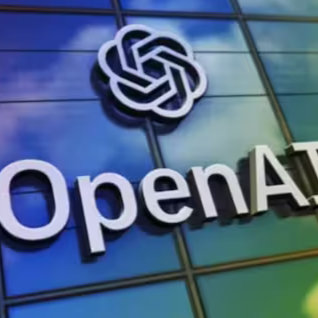Artificial intelligence took a monumental leap forward with the launch of ChatGPT on Nov. 30, 2022. In an instant, machine intelligence became useful to the masses, capturing the imagination of the world and sparking the beginning of the next major platform shift.
This type of general-purpose technology — called generative AI — redefines how we create, consume and manage information. Just like electricity transformed every facet of society, generative AI is poised to become part of our daily lives, enhancing productivity in countless ways.
In the past 10 months, my team and I have engaged with hundreds of financial services leaders ready to embark on their generative AI journey. Many are at the outset, thinking through their strategy and figuring out how to navigate their initial use cases and the associated risks. This article serves as a compass, capturing frequently asked questions and sentiments from bank and credit union leaders actively deploying generative AI use cases.
The Benefits of Gen AI for Banks and Credit Unions
Question #1: What kind of generative AI technology is available to financial services executives today, and how will it benefit our organization?
What’s available is a type of AI that creates new content based on what it has learned from existing content. Generative AI is applicable to all modes of content, including text, image, audio, code and video.
Text generation, in particular, has sparked the enthusiasm of bank and credit union leaders, distinguishing itself from the buzz that surrounded “chatbots” and “natural language processing” in the past.
The driving force behind this resurgence is the great potential of large language models, or LLMs. These probabilistic systems understand connections in vast quantities of text, an improvement over traditional AI, which doesn’t go beyond regurgitating information that it has been given. When you engage with tools like OpenAI’s ChatGPT or Google’s Bard, they can predict your next words by drawing from the vast corpus of text they’ve been trained on across the internet.
For the first time in history, LLMs enable us to exchange information with machines in our native language. The financial services sector, deeply rooted in data-driven, informational products, is uniquely positioned to benefit from LLMs. The potential exists to dramatically improve the efficiency ratio, a standard industry metric.
One example: With LLMs, customer questions such as, “How does a market downturn affect my portfolio’s projected performance?” can be addressed with a fraction of the effort previously required.
Addressing such a query with LLMs leads to:
1. Reduced operational costs: Swift, accurate responses mean less time and money spent on manual data review.
2. Better customer experience: Rapid query resolution enhances customer satisfaction, potentially leading to greater wallet share.
3. Decreased training costs: Employees can rely on LLMs for initial responses, reducing the need for intensive training sessions.
4. Operational speed: When employees spend less time searching for answers, there are efficiency gains.
5. Increased revenue opportunities: The time saved can be reallocated to revenue-generating activities.
There are countless examples similar to this, and incorporating LLMs for such tasks paves the way for a new era of operational efficiency in the financial sector.
Envisioning How Generative AI Will Change Banking
Question #2: What can we expect in the next decade?
Ubiquitous intelligence will be accessible to anyone with a smart device. Each of us will have access to a digital assistant — our “Chief of Staff” — to plan our vacations, answer emails, negotiate rates, open accounts, manage our schedules, and perform many other tasks that take up our time today.
Moreover, these intelligent general assistants will grant access to specialized autonomous agents, paving the way for groundbreaking innovations. Autonomous agents are AI-driven programs that can independently initiate, manage, and complete tasks, adjusting their approach based on evolving objectives.
Picture a student ready to open their first bank account. The student merely tells the Chief of Staff, and autonomous agents from various financial institutions offer tailored account proposals, each vying to provide the best terms based on the student’s unique financial profile. The entire process, driven by intricate negotiations between the Chief of Staff and these agents, happens without any human intervention.
In much the same way we couldn’t have anticipated the rise of smart homes from the advent of electricity or Uber from the birth of smartphones, generative AI is poised to unveil unforeseen opportunities that go beyond the realms of tools like ChatGPT, and this progress is accelerating at a rapid pace.
The financial sector has consistently aspired to shape a future where consumers and businesses can effortlessly manage accounts, conduct money transfers, or execute refinancings, all through a natural language conversation. Look for generative AI to put this aspiration within reach.
Imagine one of your customers posing the question, “How would my monthly payments vary if I refinanced my mortgage with you versus [insert your competition here]?”
A swift, streamlined reply should be standard. But with financial products becoming more commoditized, balancing profitability goals with exceptional customer experience poses a unique challenge in answering such a question. And yet, both retail and business customers seek this level of interaction.
Given the speed of the technological evolution, financial institutions are embracing these capabilities. The mandate is clear for executives: Incorporate this technology into your processes while judiciously weighing its implications.
Protecting Sensitive Data from Gen AI Leaks
Question #3: How do we harness the power of these models on proprietary institutional knowledge without exposing sensitive data?
In our interactions with financial services executives, a major focus has been on selecting use cases that tap into proprietary institutional knowledge to drive workflow enhancements, while simultaneously managing the risks associated with data exposure.
The first reaction at many banks and credit unions was to block employees from using tools like ChatGPT. Yet, this doesn’t address the broader challenge posed by the use of personal devices.
For example, an employee might copy an email from a customer and paste it into ChatGPT on their personal device to gauge sentiment and generate a quick response. This inadvertently diminishes transparency regarding what data might be relayed to providers like OpenAI for model training.
Consequently, financial institutions are taking steps to minimize the risk of data exposure, while still engaging in rapid experimentation across use cases. At the heart of these efforts is a governance framework tailored specifically for generative AI.
Key elements of this framework include:
- Opting for model providers that have strict data retention policies, ensuring data isn’t repurposed for model training.
- Implementing supplementary tools that redact and de-identify personal information without compromising response quality.
- Training and fine-tuning open-source models securely within an organization’s own environment.
Once a financial institution gets comfortable with leveraging an LLM on their internal data and institutional knowledge, a shift in focus to use case selection and mapping out workflows becomes the priority.
Where to Start with Applying Generative AI
Question #4: Which use cases should I focus on first?
When getting started, banks and credit unions typically adopt a “crawl, walk, run” strategy to the selection of use cases, beginning with those that are low risk and high impact. The initial focus is on workflows utilizing non-sensitive data where the consequences of inaccurate responses are minor. Executed effectively, this lays the foundation for rapid experimentation, which leads to early successes. The freshly invigorated staff then goes on to explore more advanced applications.
Each use case requires a different approach and comes with trade-offs in terms of cost, effort, and impact. The table below provides examples of common use cases across financial institutions.

After implementing your first use case, you’ll begin to understand that the pace of change in this space is happening in days and weeks. What seems out of reach today could be achievable in a matter of months.
As an example, consider two trends: First, as advanced models become more affordable, they offer superior analytical capabilities to augment and streamline business processes. Second, open-source models, becoming smaller and more powerful, can effectively run on a device, integrating seamlessly into in-house operations.
As these types of generative AI models become increasingly affordable and the financial services industry gets more sophisticated in its ability to harness them, additional opportunities arise. For example, autonomous agents can be seamlessly integrated into internal workflows to communicate directly with all those Chief of Staff digital assistants working on behalf of existing and prospective customers, much like the scenario we painted with the high school student opening a bank account.
Empowering your staff to continually explore and test new use cases with emerging tools will create a culture that attracts the best talent. This is the kind of workplace that innovative people want to be a part of.
With the help of these empowered and innovative employees, your financial institution will be able to adapt to new developments quickly and gain a competitive edge.
Talent Strategy for Capitalizing on Gen AI
Question #5: How do I prepare my workforce for this shift?
Unlike past platform shifts, generative AI stands out because its capabilities match, and will eventually exceed, what makes humans unique: intelligence.
If knowledge creates value, and understanding the links between knowledge enhances efficiency, then the notion of condensing all of our collective knowledge into a system that understands these relationships is the pinnacle of humanity’s technological journey.
This radical idea elicits a mix of excitement and hesitation. A huge transition is on the horizon, signaling an inevitable need for a majority of knowledge workers across sectors to adapt and retrain. Undoubtedly, one question many employees have is, “How will this influence my role?”
As with all change, employee reactions will vary: Some will embrace generative AI, while others resist. Effective change management becomes essential for both groups, and it’s paramount for leadership teams to strategize for this transition proactively rather than reactively.
Based on my experiences observing leaders in the financial services space, I believe the approach with the best chance of success is twofold:
• For the enthusiasts: Provide them with resources, education, and tools that empower them to delve into experimentation and explore new use cases. This not only fosters innovation but also retains top talent.
• For the apprehensive: The antidote to fear is deep understanding. Invest in their growth, familiarize them with the new tools, demystify underlying concepts, and pair them with colleagues who have naturally adopted these changes.
Appointing a dedicated leader for this transition is essential. Such a figure should exhibit both empathy and adaptability. Staying abreast of rapid technological advances while inclusively guiding all willing employees on this transformative journey will be indispensable for maintaining a competitive edge.
It’s Already a Generative AI World, Ready or Not
The financial services industry is on the brink of a powerful transformative wave.
Early adopters are poised to reap significant advantages, from sharpening their efficiency ratios to delivering unmatched customer experiences. The road to triumph will be paved by those who adeptly pick use cases that amplify and energize their organizational spirit, all while thoroughly grasping and mitigating associated risks.
The enhanced productivity and service standards we’ve long pursued are now within grasp, and first movers with the right mindset will emerge as leaders in the age of AI.







